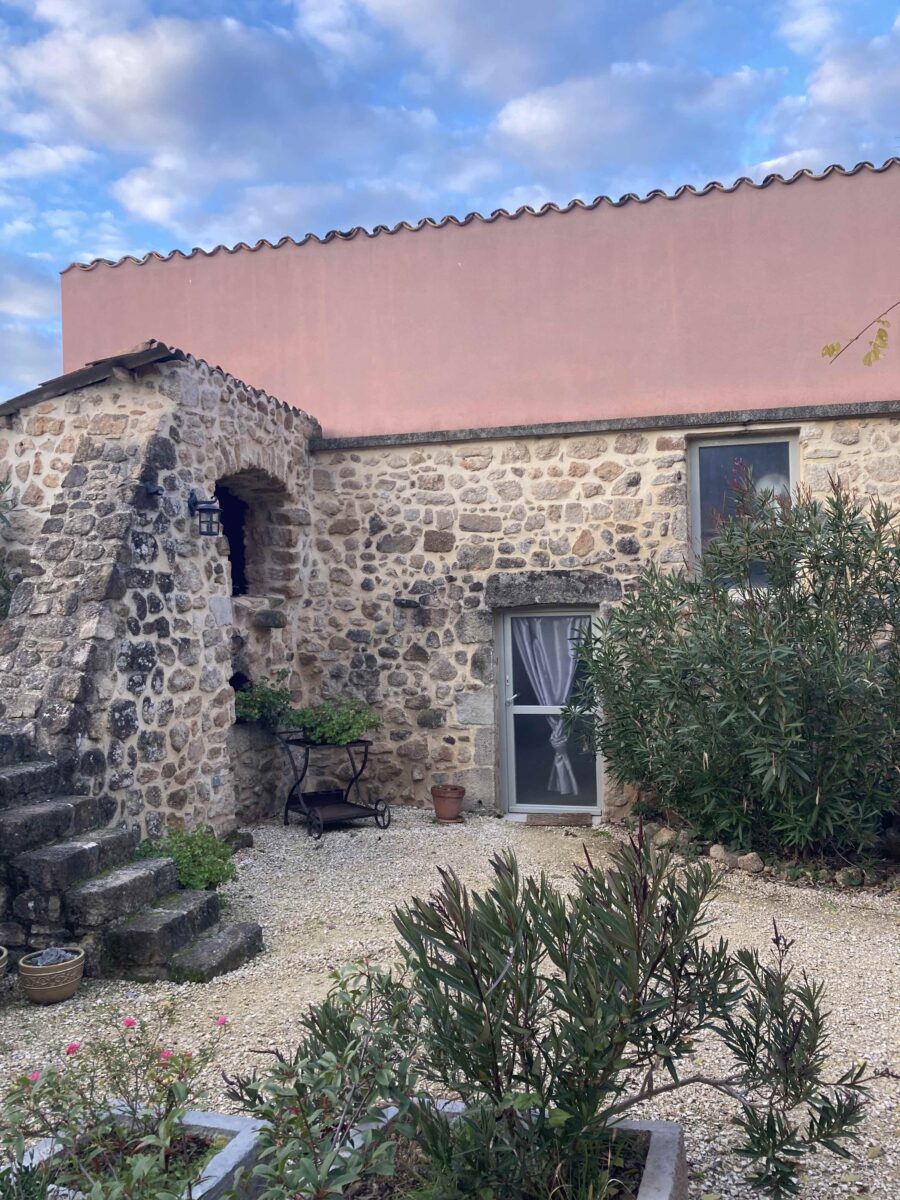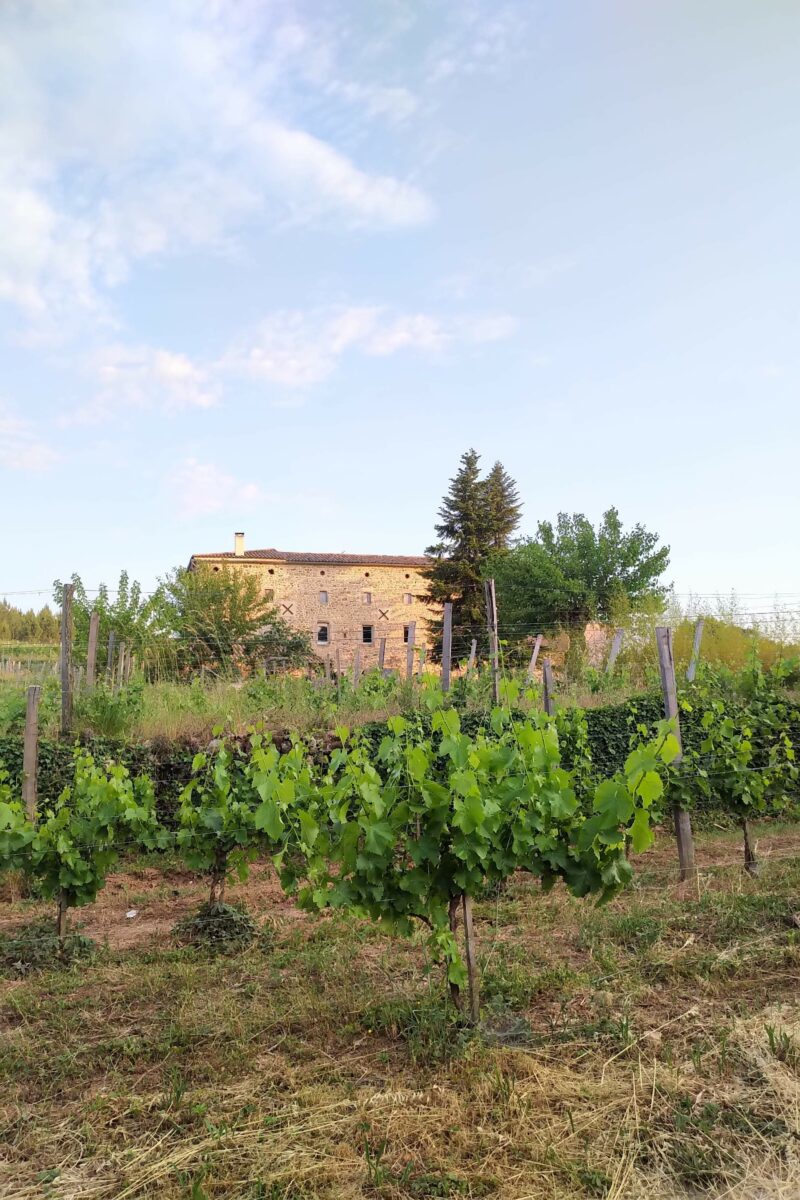
September 2024
L’Ardèche
We met a winegrower who was rather optimistic about the forthcoming harvest, with a vineyard showing good vegetative development and mildew that was quite contained.
Ardèche: North of the Mediterranean climate
The Ardèche is at the crossroads between the Mediterranean climate in the South and the continental climate in the North. Vigneron François Tissot points out that the Ardèche experiences the heatwaves and droughts of the South, but also the storms of the Cévennes, which can bring downpours of water in a very short space of time, and cooler night-time temperatures from mid-August onwards.
This duality of water extremes, combined with poor, easy-draining granite arena soils, can make winegrowing complicated at Mas Heritage.
To adapt to the situation, François is working on several fronts:
- Enriching the soil’s organic matter and activating its microfauna to ensure a healthy vineyard capable of defending itself against pathogens.
François maintains plant cover until late in the growing season so as not to leave the soil bare. Since he set up his vineyard, he has also used the Geophile method, which he has been advising winegrowers in the Rhône Valley for over 15 years.
The method is based on two principles: to activate the plant’s immune systems using compost teas, which activate the life of the soil, and to encourage the plant to produce reserves to help it defend itself against external aggression.
François reminds us that nature abhors a vacuum and that if the soil is rich in ‘chosen’ micro-organisms, there will be little or no room for pathogens thanks to the competitive action within these micro-organisms. These compost teas provide a very rich and varied microfauna, focusing not just on the bacteria and fungi we often talk about, but also on protozoa and nematodes.
To complement this, François uses foliar fertilisers that stimulate the plant’s defence systems through their penetrating effect.
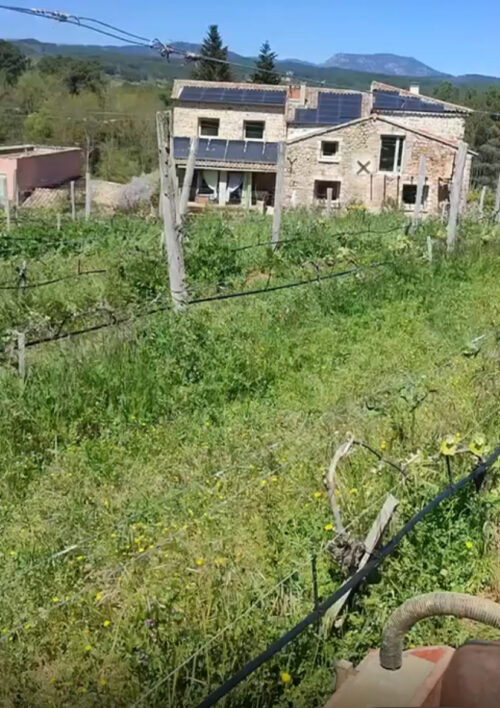
Above picture : Working under the row to avoid competition with the vines but maintaining plant cover between the rows.
- A solution for distributing the sudden downpours that occur during the Cévennes into smaller, more regular rainfall during heatwaves.
Since his installation in 2013, François has seen Cévennes storms bring large quantities of water in just a few hours or days. This rainwater infiltrates the soil, but much of it runs off towards a low point on the estate.
Last year, to control some of this water, François built a hillside reservoir to store some of the rainwater so that it could be distributed sparingly over the summer to the vineyards via an irrigation system. The excess rain continues to feed the rivers as before.
Thanks to this installation, the vineyard is very beautiful and leafy this year, as the vines have not had to suffer from the lack of water.
Climatologie 2024
Following the 2023 harvest, the region received a fair amount of rain, but not too much, with good rainfall and temperatures within the norm for the season. A hot, dry winter followed, bringing with it the winegrower’s fear that budburst would be far too early.
These warm temperatures didn’t last, however, and the cold end to the winter kept the vines in a state of hibernation.
Heavy rainfall filled the estate’s reservoir in the space of two days.
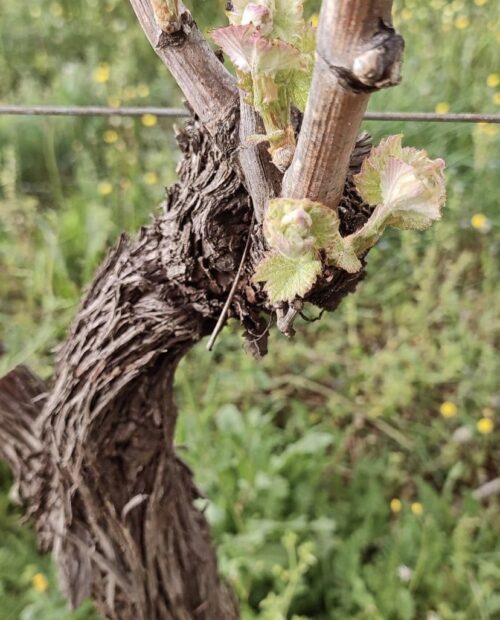
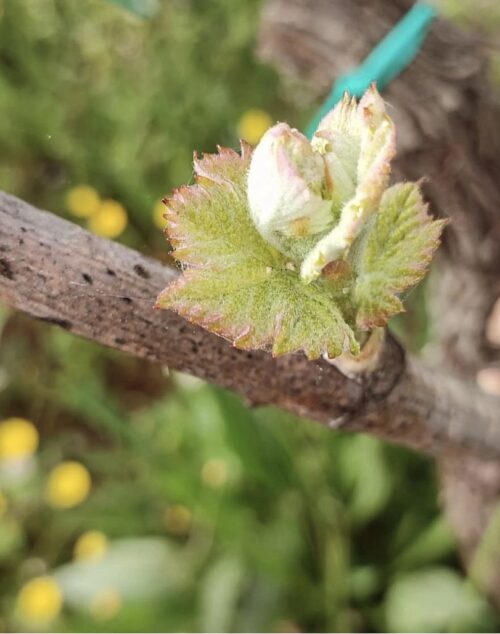
Budburst was around 20 March, an early date, with the first organic treatments ten days earlier.
Spring was cold, slowing down vegetative development.
The rest of the season was intense, with increased monitoring of fungal diseases to ensure we intervened quickly and at the right time.
Flowering also went very well at the very beginning of June.
This year’s hail clouds also avoided the estate.
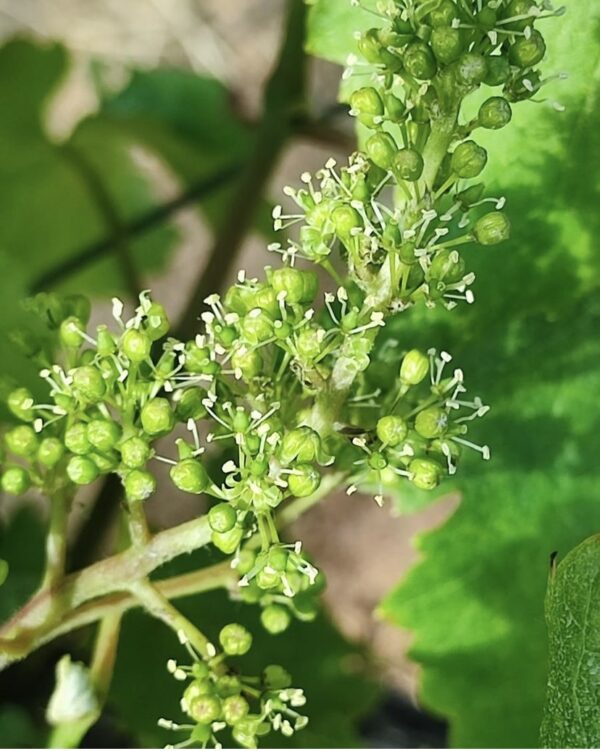
The results for the estate were good, with a few more treatments than usual but a reasonable dose of copper applied at 2.5 kg/ha (below the maximum authorised value of 4 kg/ha).
End of summer bottlings
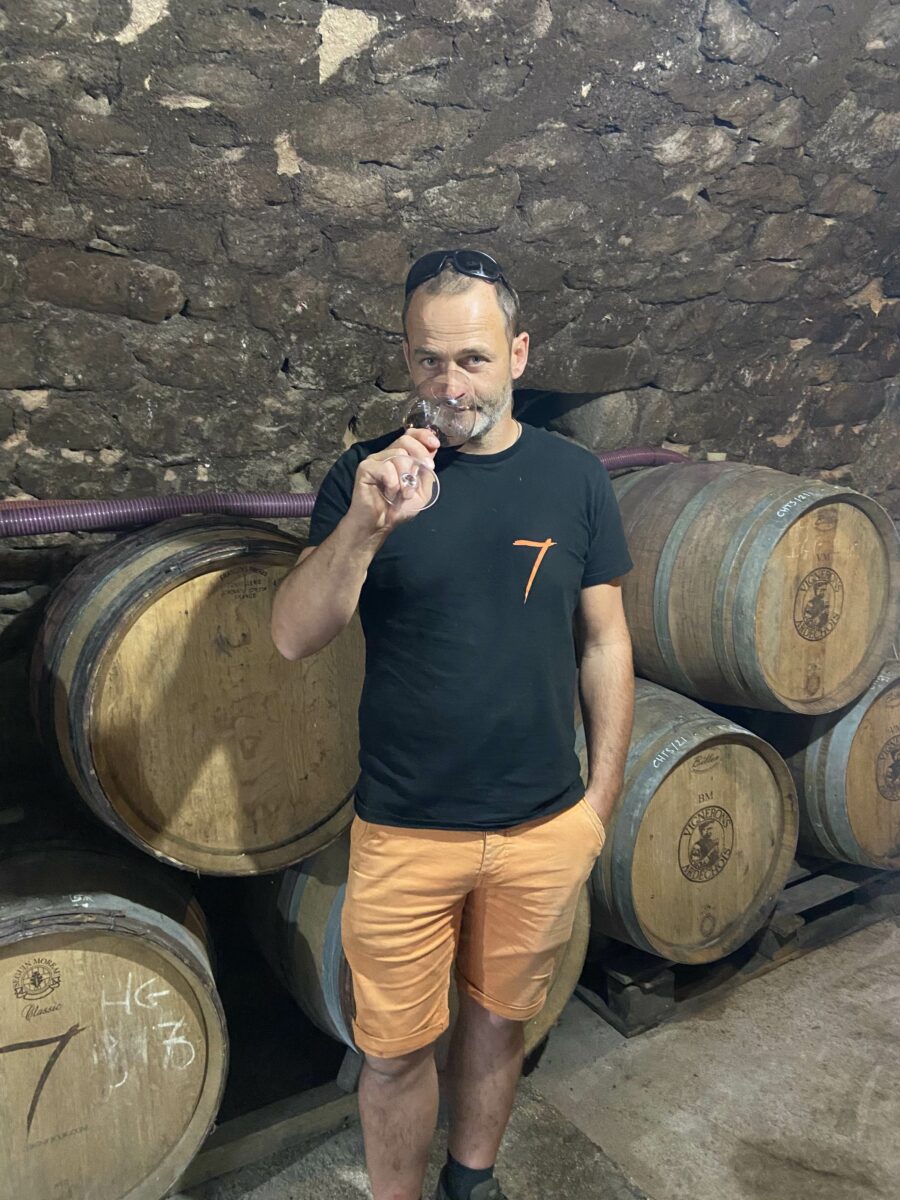
The 2023 red wine vintages were bottled last week with :
- 1500 bt of Mas Heritage – Syrah 100% 2023: vinified in tanks then matured in barrels
- 6000 bt of IGP 2023 – Syrah 30% Merlot 70%
- Just under 2500 bt of Chatus 2023 – 11 months in barrique
Chatus, a typical grape variety native to the Ardèche, is rich in rustic tannins, and François’ idea is to extract the juice and aromas gently so as not to overload the musts and then the wine with tannins.
For all his wines, he uses a ‘cuvaison en millefeuille’ system, alternating between crushed grapes and whole bunches. All the grapes are kept wet at all times, but he never pushes the cap, preferring to crush them at the foot of the vat or gently punch down the cap for around ten days.
The wines remain supple with a beautiful fruity expression. For Chatus, this approach is perfectly suited to its structure, producing beautifully structured yet supple and aromatic wines.
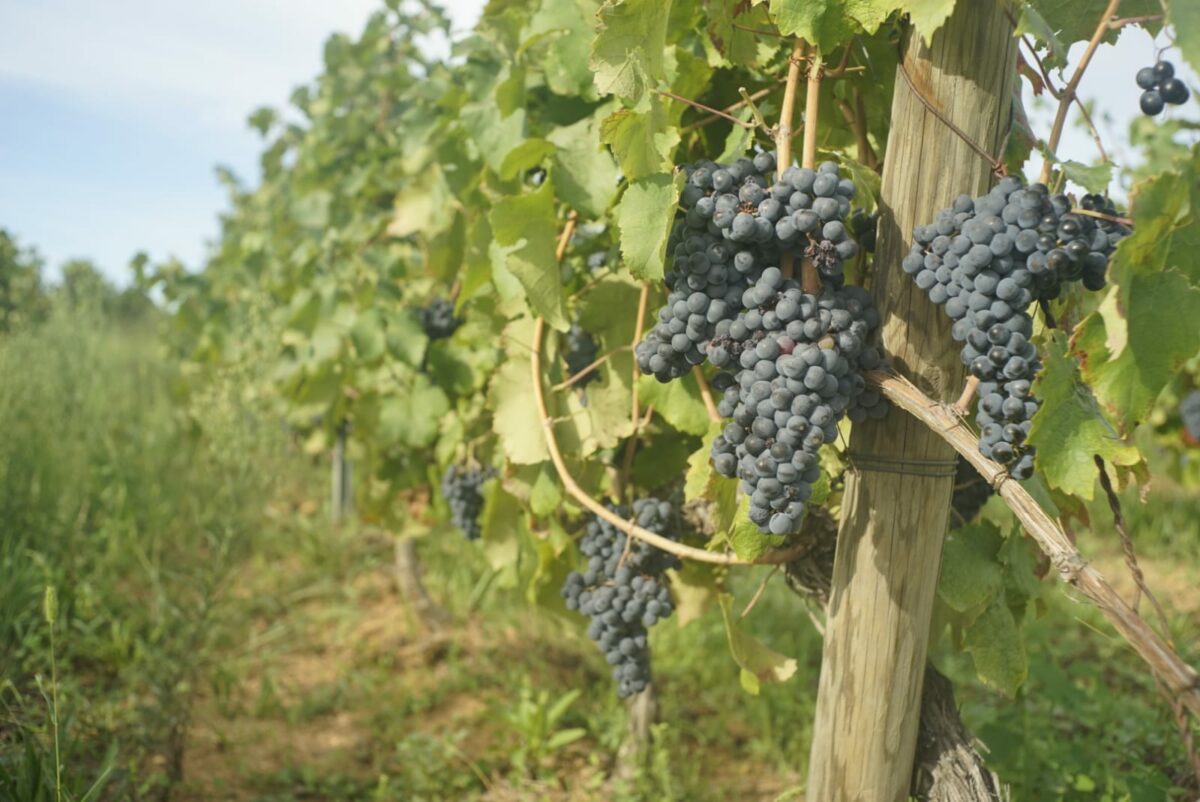
Above picture : chatus vineyard
A new cellar - a major project for the estate
A wine-making and ageing cellar is planned for construction in 2025.
This is a project that has been under development for a number of years and will blend into the landscape of the estate. Participatory funding is planned to finance part of the investment. If you’d like to find out more, here’s the brochure (in French only) presenting the project.
If you’re looking for a weekend or holiday destination, François Tissot has built two eco-gîtes on his estate, Mas Heritage, where you’re sure to enjoy a pleasant stay in the heart of the vineyards.
